

"Kent State Redux"
HELMET HUT NEWS/REFLECTIONS July 2011:
Kent State Redux
By Dr. Ken
Allow me to state that the many comments that were generated by the HELMET HUT NEWS/REFLECTIONS column of last month that were in agreement with the observations about what can only be termed the degeneration of the professional game in the past fifteen to twenty years were much appreciated. For those who seek a source for reference material, enjoyable reading, and/or information about the past eras of football (and other sports), there are reputable dealers who can supply media guides, game programs, magazines, and other memorabilia. I have for years dealt with James Kramer Sports of Long Beach, California due to their extensive selection of materials, wonderful personal service, and appreciation for the same qualities of the game that I have so much respect for. Building a library of "older materials" allows for greater accuracy in one's information bank and of course, lends a lot more enjoyment to the history of the specific sport or games one has an interest in. For those interested in perusing sixty year old media guide covers for example, and noting various helmet and uniform styles, James Kramer has these on their web site with a great deal more information:
James Kramer Sports
The June 2006 Helmet News/Reflections column of
HELMET HUT, marked one of the earliest journeys into my memories of “the old days,” my personal accounting of high school and college football very much as things related to uniforms, helmets, and the various individuals and events I was fortunate enough to be influenced by. Writing about Kent State was a true pleasure for me. As noted in that 2006 column, some of the Kent State players like Don Fitzgerald proved to be a motivating factor in my own play and as a young high school coach, Flashes head coach, Dave Puddington was nice enough to give me a copy of his playbook and a lot of feedback and discussion so that I could incorporate some of his methodology into my own offense and defense. However, the April 2011 HELMET NEWS/REFLECTIONS column provoked one of my long time buddies to note, “Geez you can really pick ‘em. Kent State, Mississippi State, how come so much of your interest and motivation was tied to the uh, lesser schools rather than the all star schools like Alabama or Ohio State?” If this had been the first time this specific point was brought up to me, I might have been taken aback, but the “what” and “how” of one’s motivation has produced its own library of psychology books and research papers. We all have “things” that strike us in a particular way and whatever need is met by that specific stimulus becomes incorporated into who and what we are. There certainly were players from the larger, successful programs that caught my eye and offered quite a bit of motivation in the early and mid-1960’s. Ohio State’s Dwight “Ike” Kelley was the Buckeyes’ first Consensus All American linebacker, a tremendous hitter and team leader that now has the team’s Special Teams Player Of The Year Award named for him.
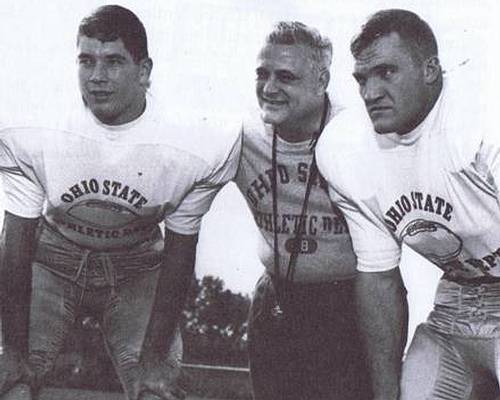 |
An undersized demon in the NFL, he led the Eagles special teams for seven years and was a very good linebacker as both a starter and reserve. To me he epitomized the ideal football player of the mid-‘60’s with his all out, hard hitting, and enthusiastic approach to the game. Alabama’s never-quit and run-to-the-ball defenses were the standard for the Sixties. From Lee Roy Jordan’s fierce and relentless pursuit of ball carriers to Bob Childs’ ability to seemingly be on every part of the field at the same time, Alabama set records for rushing and scoring defense that literally altered the way the college game was played. What was sometimes lost was their offensive efficiency. While quarterbacks Pat Trammel, Joe Namath, Steve Sloan, and Ken Stabler were the headliners, a bevy of capable, short yardage running backs made that offense a championship unit. Though David Chatwood had my interest because of one or two televised plays that found him running in an exceptionally hard and determined manner if not fast and far enough to catch national attention, it was in fact the grouping of Bama backs that made their offense so effective. While Mike Fraccia and Les Kelley were the standouts, Chatwood, Frank Whaley, Steve Bowman, and Benny Nelson seemed to always keep the Tide rolling with consistent if not spectacular hard charging runs.
Yet there is truth to the observation that it wasn’t great success that might have made me a fan but rather, the qualities of hard play, rugged determination, and a willingness to go all out and these were not limited to great teams or great players. My previous Kent State piece noted that the doldrums they were in during the early 1960’s were replaced by great optimism with the hiring of Leo Strang as the new head coach for the 1964 season. The buzz from my new collegiate teammates about this specific squad, the High School All Americans and terrific Massillon Washington players they corralled, and the fact that they were believed to be good enough to face off against any freshman team in the nation captured and kept my interest. Strang, an exceptional high school coach in Ohio and a college art major who has been credited with the development of the first vinyl helmet decals, was expected to put an exciting team onto the field each week. His unbalanced Wing T Offense, at least in my eyes, was innovative and also worthy of note, but it was Don “The Human Hammer” Fitzgerald that was the national focus of the program. As one of the few players experienced with or interested in lifting weights, I was always on the alert for other players who seemed as if they at least might have had a background in the weight room. Fitzgerald certainly looked the part at 5’11” and 230 pounds. Transfer Larry Gordon, a Mr. Ohio physique winner who left Kent in order to return to school in his hometown of Cincinnati told me, “Fitzgerald is about as strong and tough as they come.”
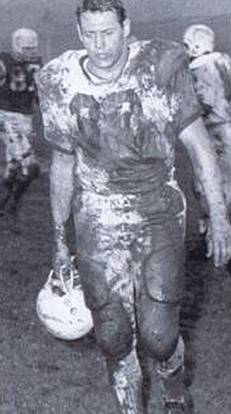 |
The Human Hammer after another typical day of work
When I met Fitzgerald on a visit to the Kent State campus after the football season, he appeared a bit shorter but wider and stronger than his listed physical statistics and there was no doubting his absolute toughness. His 296 season carries with forty-seven vs. Western Michigan in the 1966 finale, were NCAA records and both indicative of his toughness. His 1245 hard earned yards placed him second in the nation to Idaho’s "Thunder" Ray McDonald, thus, how could Fitzgerald not be a running back to be emulated? I learned that “Fitz The Blitz” had been tough from the daily grind at Ambridge (PA) High School, a Western Pennsylvania football hotbed that boasted linebacker Mike Lucci, Frank Antonini,
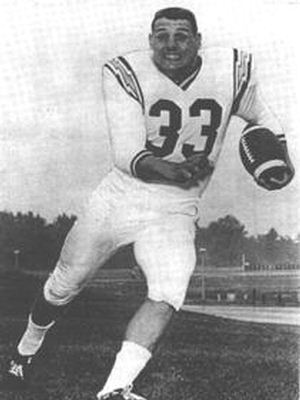 |
and a host of other excellent players who later made their mark in the collegiate and professional ranks. Fitzgerald also excelled in track and field which made the rugged running back an easy choice for Kent State and Strang who was determined to put the program on a winning path.
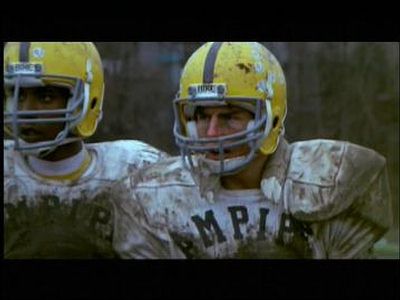 |
The Tom Cruise movie, ALL THE RIGHT MOVES featured the fictitious Ampipe High School. Though filmed in Johnstown, PA, the comparison to the hardscrabble, tough town of Ambridge, PA was obvious. Ambridge, named for the American Bridge Company that for the most part founded and "owned" the town, served as the stimulus for the "American Pipe Company" of the movie's Ampipe
Certainly, Fitzgerald stood out immediately as the undefeated frosh team dominated opponents and the bruising fullback was the team’s leading rusher. Limited by injury as a soph, he hit his stride in ’66 as a junior and garnered national recognition. His 1245 rush yards in addition to placing him second in the nation, was a new Mid American Conference record and needless to add, he was the All MAC Fullback. Again struck by injury, an ongoing hamstring pull put a damper on his senior totals yet his 891 yards came when the Flashes needed them and he continued to receive national recognition.
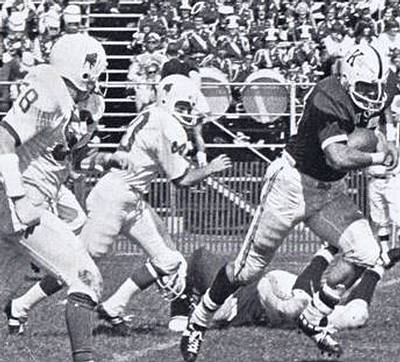 |
In an era when most college football players returned home for the summer months off from classes, usually to work at a job that required hard manual labor, I was typical. During the summer I worked side by side with my father as an iron worker, doing most of the heavy lifting and carrying for our crew. I provided security for a number of touring rhythm and blues and rock and roll groups on the weekends for additional income. My primary focus however, was keeping a very clear picture of Don Fitzgerald hammering opponents as they attempted to tackle him as I ran in knee-deep or waist-deep water by the ocean shore our home town was located on, or charged up and down steep sand dunes. While pro running backs Charley Tolar and Keith Lincoln provided plenty of additional motivation, Kent State’s Fitzgerald was a more tangible role model and one I had actually met. A fourth round choice of the Cardinals in the next year’s annual NFL draft, he eventually made his way to the Falcons where he remained for two seasons before finishing his career with the Lions. I believe that for all of us, there will be great players and great teams that inspire or motivate us, and others who receive far less recognition, that do the same for a multitude of the “right” reasons.